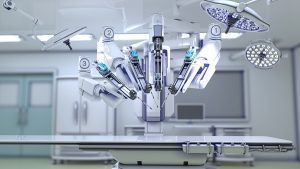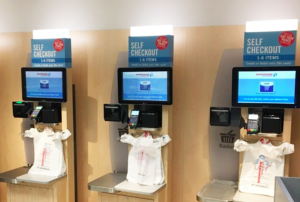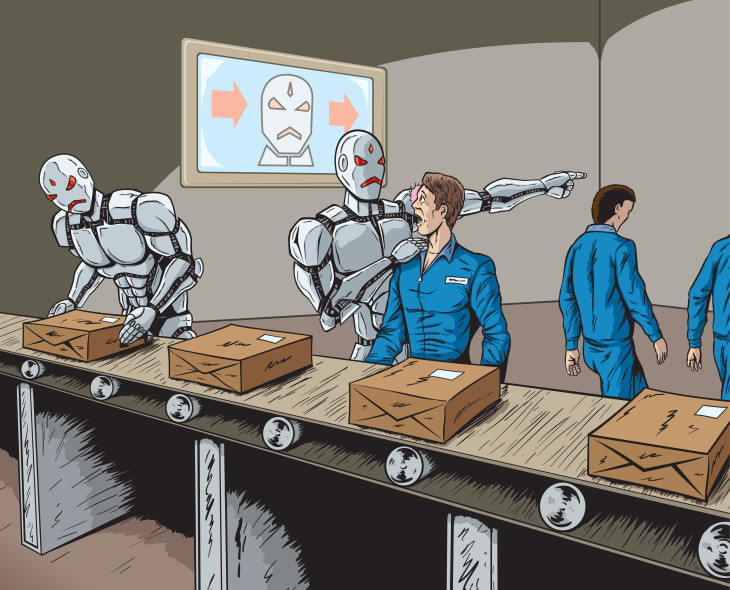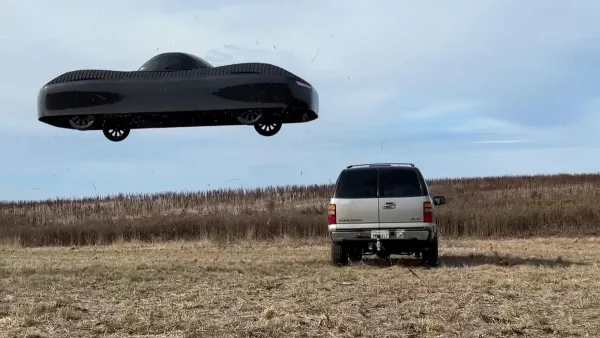Robots taking human jobs
Robots vs. humans. The idea has been the story line of several blockbuster movies, but it seems that the real showdown won’t be like that in Terminator. Rather, humans are being defeated by artificial intelligence in the workplace. Robots are predicted to take over around 52% of jobs in the United States in approximately 7 to 12 years. This means that 75 million people could be replaced in their current jobs.
Examples of jobs that will be replaced are not in one field but rather vary greatly: insurance underwriters and claims representatives, bank tellers and representatives, financial analysts, construction workers, inventory managers and stockists, farmers, manufacturing workers, journalists, taxi drivers, and even some movie stars. According to BBC News, “Machine operators and food workers will be hit the hardest.”
 It seems that no job is completely safe. As online courses gain popularity, some schools are cutting staffing of teachers. And even nurses and doctors are being assisted by kiosks that allow patients to check in and report their symptoms. They even take blood pressure, temperature, and other vitals. Robots are replacing surgeons in some cases, too. Cleveland Clinic has a well-known Center for Robotic and Image-Guided Surgery.
It seems that no job is completely safe. As online courses gain popularity, some schools are cutting staffing of teachers. And even nurses and doctors are being assisted by kiosks that allow patients to check in and report their symptoms. They even take blood pressure, temperature, and other vitals. Robots are replacing surgeons in some cases, too. Cleveland Clinic has a well-known Center for Robotic and Image-Guided Surgery.
One company that has expanded their empire with a full team of robots is Amazon. Amazon has more than “100,000 robots in each factory nationwide,” reported MIT Technology Review. This means 40% of Amazon workers have been replaced by auto-controlled robots. The use of robotics provides a more efficient way of helping customers get their packages on time.
Another company that is trying to expand their empire with robots is the taxi-like company Uber. The app in which customers can hire and pay a driver in just a few clicks has already put many cab companies out of business, but now Uber is investing in self-driving cars. The new chief executive, Dara Khosrowshahi, is considering closing and shutting down the self-driving cars after a self-driving Uber car struck a woman while trying to push her bicycle. Despite this unfortunate event, Uber is being bold and experimenting with their new idea. The self-driving Tesla car drives people to their destination with just a click of a button. Some sources estimate that in approximately 10 years, self-driving cars will become normal and comprise a majority of cars on the road. This could mean job loss for delivery persons, mail carriers, truck drivers, taxi drivers, and possibly even bus drivers.
 The most common and recognizable form of human employees being replaced by convenient automated technology is the self-checkout in local grocery and retail stores. These have been around for a few years now, and while they may seem to threaten employment, so far only approximately “500 jobs have been replaced for common local grocery stores, Walmart, Kroger, Giant Eagle, etc.” says, CNBC news. However, once the public becomes used to using the self-checkout systems, it is probable that stores will cut back more on human cashiers.
The most common and recognizable form of human employees being replaced by convenient automated technology is the self-checkout in local grocery and retail stores. These have been around for a few years now, and while they may seem to threaten employment, so far only approximately “500 jobs have been replaced for common local grocery stores, Walmart, Kroger, Giant Eagle, etc.” says, CNBC news. However, once the public becomes used to using the self-checkout systems, it is probable that stores will cut back more on human cashiers.
Each year technology is getting better and more advanced than the previous year. As robots and artificial intelligence increase, it becomes easier and more profitable for companies to use them rather than human, whom have to be paid wages, given breaks, sick leave, and vacations days, and compensated with health benefits. For many jobs, humans may simply not be able to compete with the convenience and speed of robots.











